Have you been learning English for several years now but feel you only understand 50% of the fast English of native speakers? Do you still need subtitles to watch a movie or TV in English? Well, we thought that it’s finally time to tackle this problem, and that’s why we launched a very useful and fun new app called Wannalisn. Our methodology focuses on providing our users with much needed ear training in order to familiarise themselves with the sound shapes of fast, natural speech and how English is spoken in the real world. Here we’re going to give you some tips and insights into Wannalisn’s unique method with common English clusters so that you can finally start to become an expert listener.
What’s the 50% we don’t understand?
To begin with, we need to identify the 50% that people struggle to understand when listening to English spoken at a fast natural speed. It will help if we refer to a previous post where we saw that there are two categories of words in English: Content words & Function words.
In terms of pronunciation, the key content words (verbs, nouns, adjectives, adverbs, names, numbers etc) are generally said with greater emphasis (stress) and clarity. On the other hand, the grammatical words (prepositions, articles, pronouns,’To be’ verbs, conjunctions, auxiliary verbs, among others ) are typically reduced with the vowel sound schwa /ə/ to give greater prominence to the key words that carry the main message of the speaker.
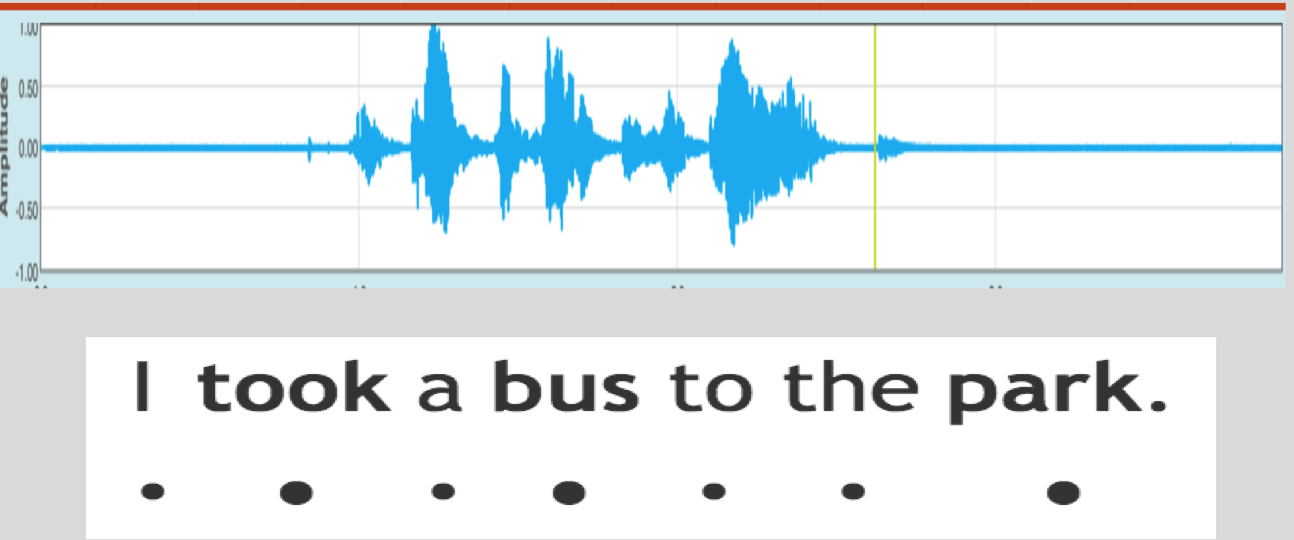
Spectogram highlighting stressed content words
Because the function words generally become compressed and weakened in ‘informal’ spoken English, these are the words that are most difficult to understand in a phrase for a large number of second language English speakers.
Remember that spoken English is very different to written English. Therefore, we need to train our ear to recognise the small function words in fast speech, particularly because they are the most commonly used words in the English language, as per the table below:
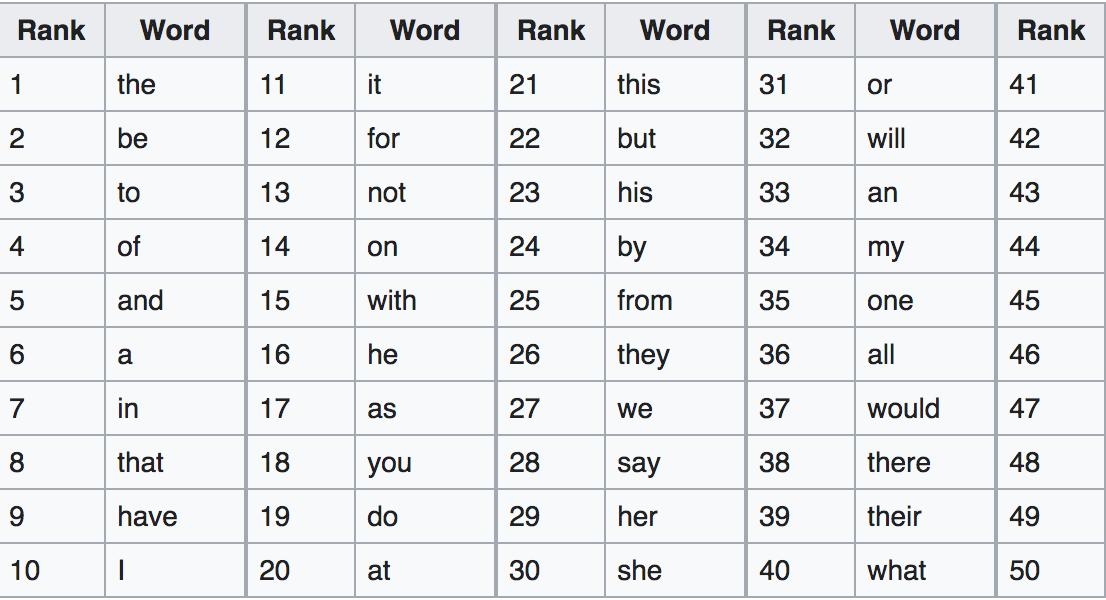
The 50 most frequent words in English
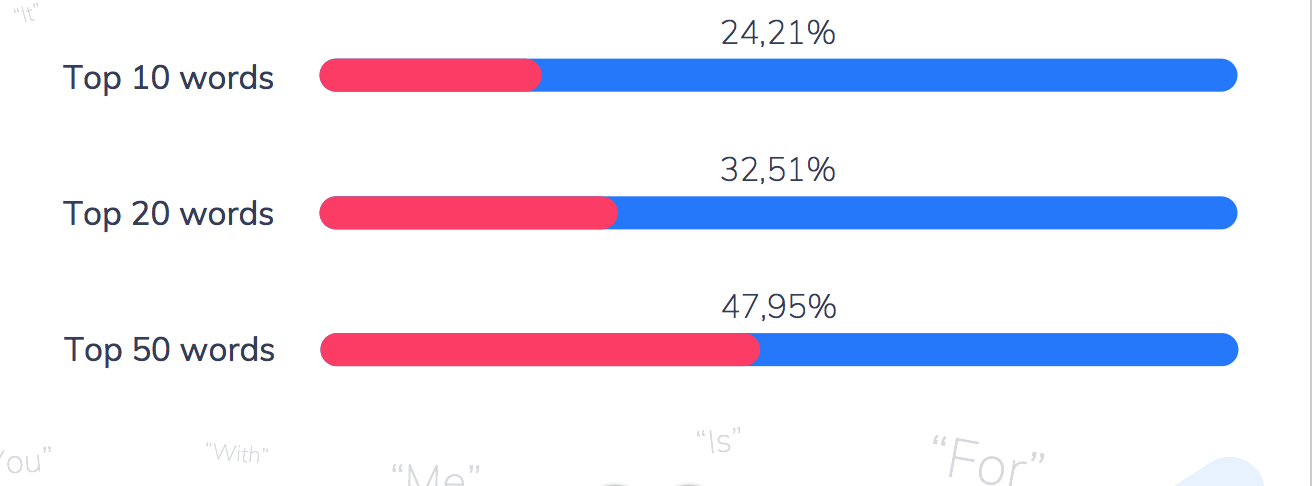
The top 50 words make up 50% of spoken English
Clusters – Combinations of function words
As we can see, function words make up almost 50% percent of spoken English. That said, it is very important to note that the small function words can sound very different if we hear them in isolation than if we hear them in combination with other function words. Let’s take an example of one such word cluster with 2 words (IT + WAS):
‘IT’ (Strong form)
WAS (Strong form)
=
IT +WAS = IHWOZ
Now let’s hear an example of a 3 word cluster:
JUST (Strong form)
FOR (Strong form)
A (Strong form)
=
JUST + FOR + A = JUSFORA
Word clusters composed from a pool of around 60 words make up almost 50% of spoken English. Clusters with 2 words are the most frequent, followed by 3 words.

Research carried out by the University of Nottingham, University of Limerick, and Cambridge University Press identified the most common multi-word clusters in conversational English through recordings from private homes, shops, offices and other public places, in non-formal settings across the islands of Britain and Ireland, with a wide demographic spread.
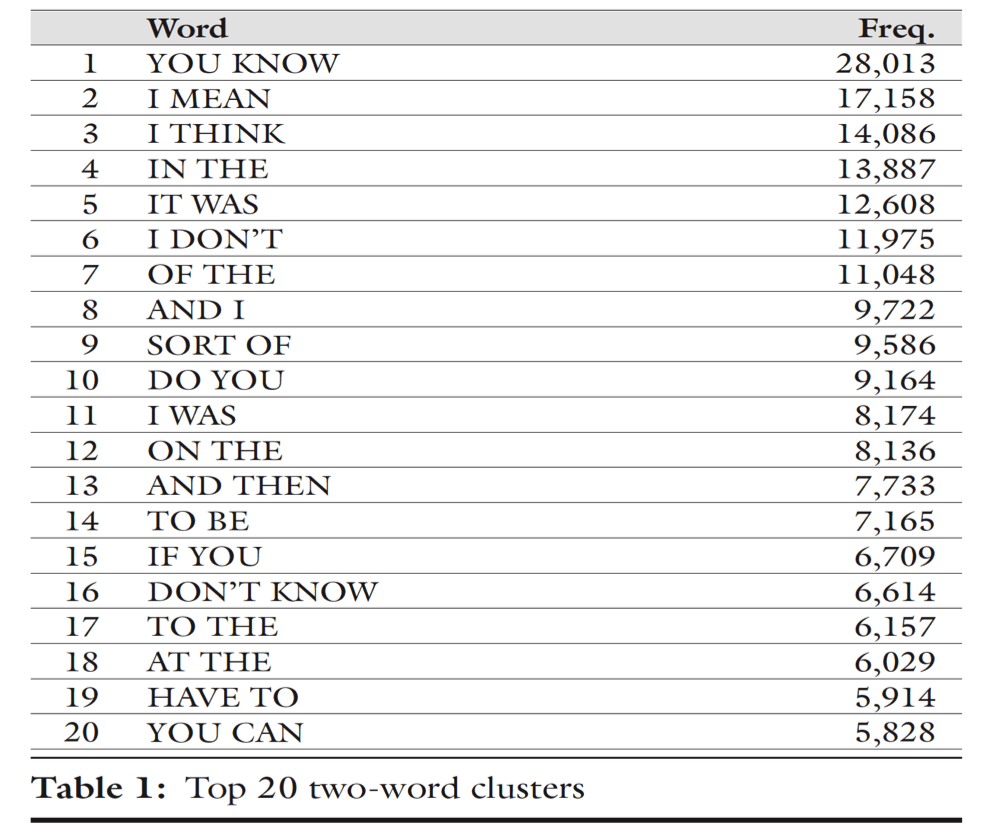
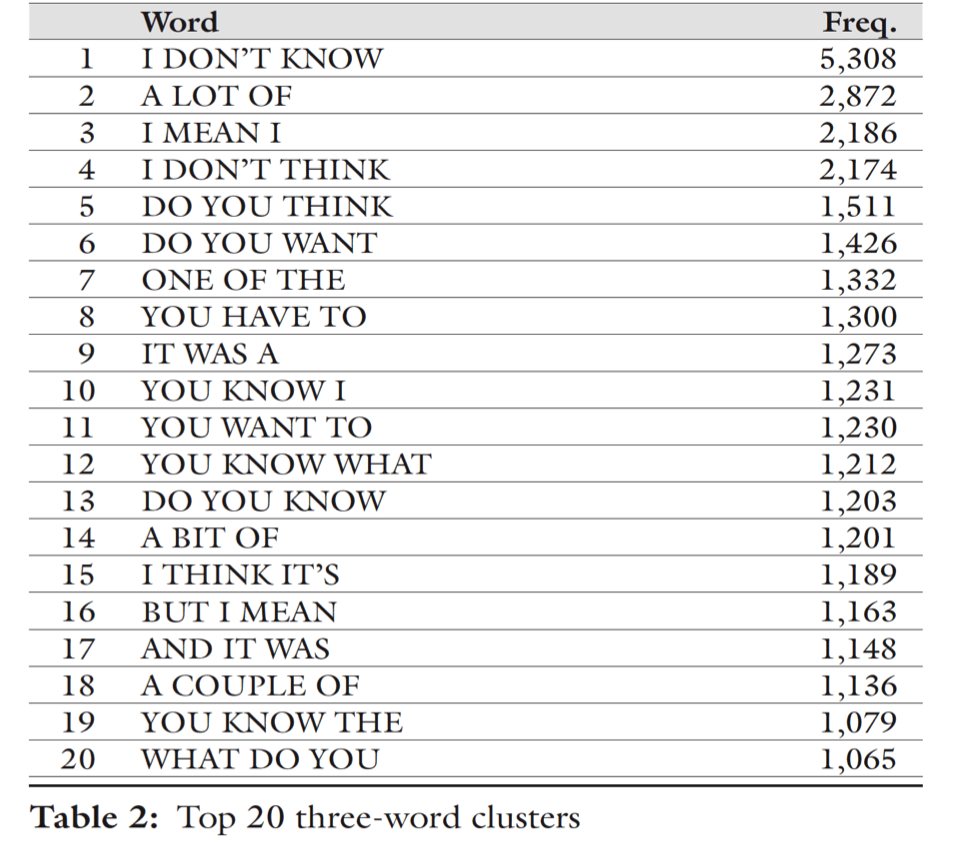
Let’s look at some of these examples in more detail and their expected pronunciation:
2-word clusters
1. It was
Clusters are said quickly because they are very common in everyday speech.
Notice how IT + WAS = IHWOZ
2. And I
In fast speech, AND + I is often heard as ANA
3. Do you
This cluster has several variants when said at a medium or fast speed. DO + YOU can be:
D’YA or DJA
4. Have to
It is very common to hear this cluster as HAFTA
5. You can
In relaxed pronunciation, this combination is said as : Y’KIN or Y’KN
3-word clusters
1. In front of
It is very common to hear IN FRONT OF = IN FRUNNA
2. I don’t know
You’re probably already familiar with I + DON’T + KNOW = A DUNNO
3. I think I
When said quickly, I + THINK + I can be heard as ATHINKA
4. Just for a
The 3-word cluster JUST + FOR + A = JUSFORA
5. A lot of
A very common 3-word combination: A + LOT + OF = ALODDA / ALOTTA
To conclude for today, the natural fast pronunciation of multi-word clusters is NOT slang. Relaxed pronunciation in English is perfectly normal, and occurs as a result of speed of speech. It is common in all registers of spoken English, from informal to formal. By learning the most common word combinations with the Wannalisn app, you will dramatically improve your listening skills. Remember, real life doesn’t have subtitles!

